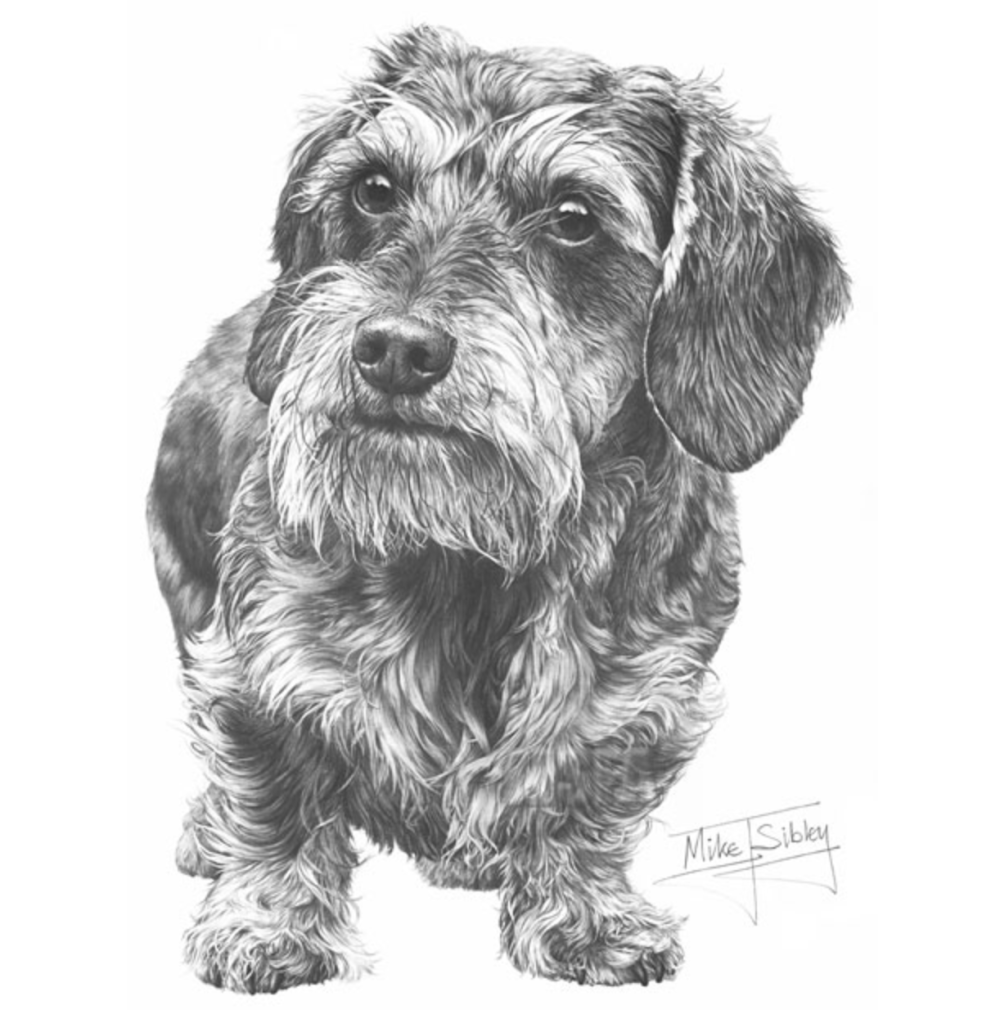
News flash: There’s no such thing as a “White Russian Terrier.”
Nor is there a “Blue Retriever,” a “Greenbone Coonhound,” or a Kerry Red Terrier.
Dog people know this to be true because not only is part of the registered names of these breeds a different color from those mentioned above, but breed standards spell out acceptable colors for their breeds. There just isn’t wiggle room on this.
So, when you come across the “Silky Wirehaired Dachshund,” not only is it an oxymoron, it is incorrect for this variety of the breed. Far from being a whim of German Dachshund owners who in the 19th century thought, “We’re bored, let’s make a Wirehaired Dachshund,” there was logic to breeding for a rough coat, and it had everything to do with the purpose of the breed: To hunt.
German sportsmen needed a dog with the tenacity, determination, and fearlessness of a Dachshund, but one with more jacket protection against adverse weather and thorny underbrush. And they made it happen.
According to the Dachshund Club of America, a wirehaired description first appeared in 1812 likely created by crossing smooth-coated Dachshunds with wire-haired Pinschers and possibly some terrier breeds including, some say, the Dandie Dinmont Terrier. As intended, early Wirehairs were used entirely to hunt, and standardized traits weren’t much of a concern. In 1883, however, ‘Mordax,’ a Wirehair owned by one of Germany’s busiest breeders, got a fair amount of attention. The rest is a history you can find on your own, because it is here that we pivot to why it is that a breed meant to be covered in a short, thick, rough, hard outer coat ever got the word, “silky,” anywhere near it.
The short answer is: We don’t know the “why.”
Sources write that the “Silky Wirehaired Dachshund” emerged as a result of crossing Wirehaired and Longhaired Dachshunds. As we understand it, one parent must be a wirehair and carry longhair, and PARENT B must either be a longhair or carry it. The end result were pups with long coats that looked silky, but had individual strands of wiry hair. The breeders of these dogs have touted their puppies as being lower maintenance than the other varieties due to this “unique” combination; some go so far as to describe Silky Wirehaired Dachshunds as “one of the rarest breeds of dogs who have repeatedly won the hearts of canine lovers worldwide.”
They just leave out the part about how anyone with an interest in showing their dog can’t show this one.
The Silky Wirehaired Dachshund is not officially recognized as a separate variety by any major kennel club. We feel compelled to remind readers that a ‘silky’ coat in a coat variety intended to hunt in inclement weather and rough terrain is not only oxymoronic, but, some might suggest, plain moronic.
We don’t have permission to share photos of a Silky Wirehaired Dachshund, but there are plenty to be found on-line, including this one.
We don’t doubt that these dogs may make lovely companions, but we confess to be students of the, “if it ain’t broken, don’t fix it philosophy,” particularly in a working breed bred to have a wiry coat for a reason!
Image by Mike Sibley
https://www.sibleyfineart.com/
